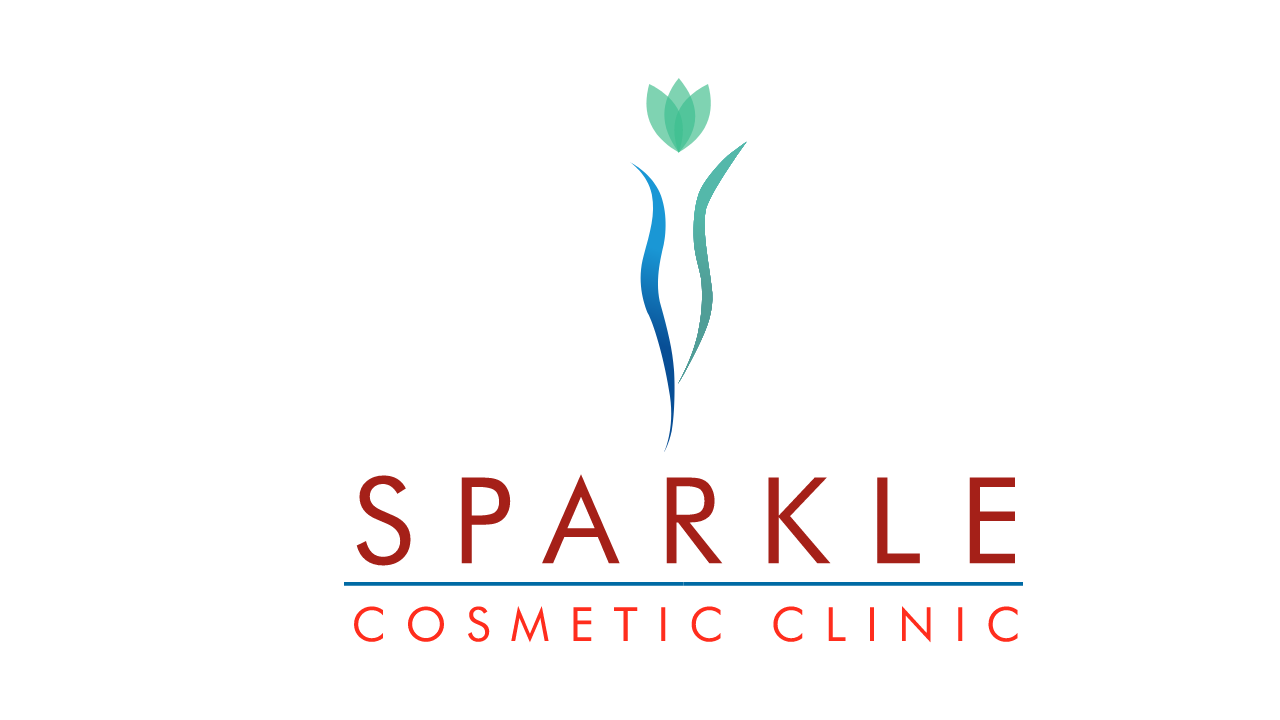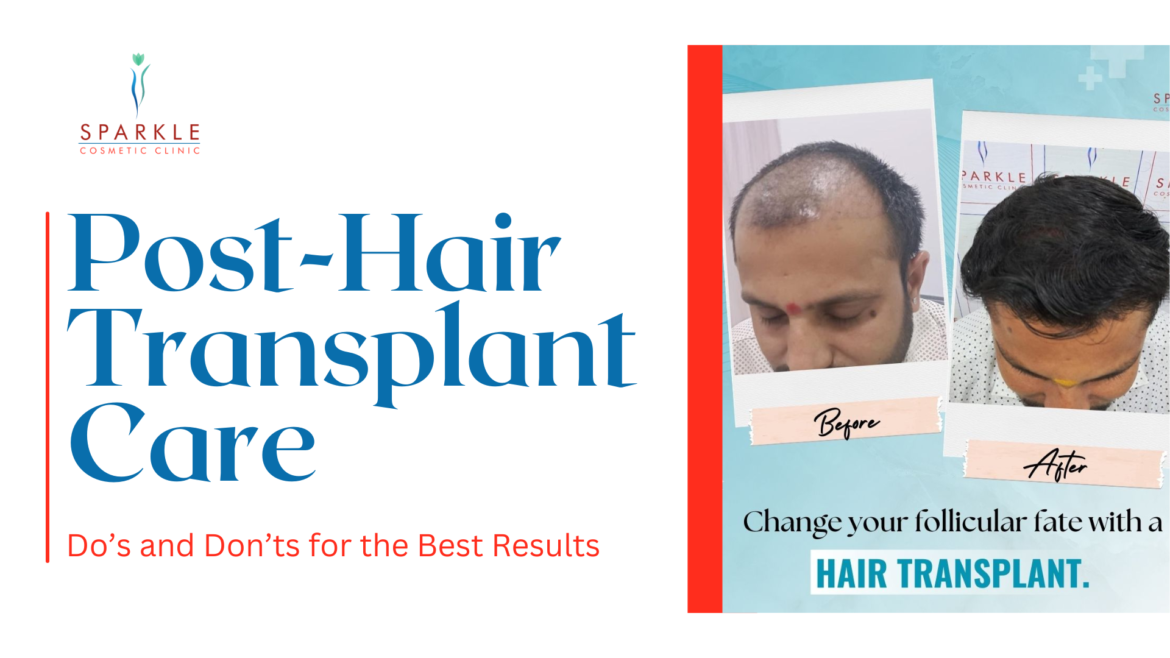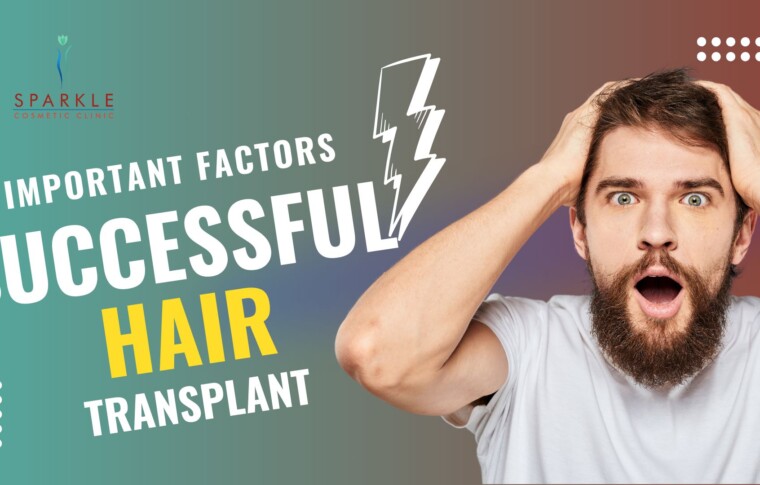A hair transplant is a life-changing decision, but the real key to success lies in the post-hair transplant care that follows. Proper aftercare can dramatically influence the results, ensuring a smooth hair transplant recovery while minimizing risks of complications. At Sparkle Cosmetic Clinic, we provide expert guidance throughout the recovery process, helping our patients achieve the best outcomes. Following a well-structured care plan accelerates healing and enhances transplant success.
Understanding the Hair Transplant Recovery Process
The hair transplant recovery process involves several phases, with each stage requiring specific care to optimize results. While every patient’s recovery journey may vary slightly, the overall timeline remains consistent.
Immediate Post-Surgery: The First 24-48 Hours
During the first 24 to 48 hours after your hair transplant, it’s crucial to focus on rest and avoid any physical strain. Some swelling and redness in the treated area are common. Avoid touching the transplant area as much as possible, and follow the clinic’s recommendations regarding medications and ointments to prevent infection.
The First Week: Critical Aftercare Steps
The first week is vital for your recovery. You may notice scabs forming around the transplanted hair follicles, which is completely normal.
Dos:
- Wash your hair gently with a mild shampoo as prescribed.
- Apply any medications or ointments given by your surgeon to prevent infection and speed healing.
Don’ts:
- Avoid scratching the area, as this can dislodge the grafts.
- Refrain from strenuous physical activities, sun exposure, or heavy workouts that cause sweating, which could interfere with the healing process.
Dos and Don’ts for Optimal Post-Hair Transplant Care
Taking care of your transplanted hair requires discipline and adherence to expert advice. Below are the most important dos and don’ts to follow for a successful recovery.
Dos for Hair Transplant Aftercare
- Follow the Doctor’s Instructions: Always follow your doctor’s guidance to ensure your recovery is smooth and free from complications.
- Use Mild Shampoos: Washing your hair is essential, but use only gentle shampoos recommended by your doctor.
- Sleep with Your Head Elevated: This helps reduce swelling, especially during the first few nights.
- Apply Medications as Prescribed: Use any ointments or medications provided to help with healing and infection prevention.
- Attend Follow-Up Appointments: Regular check-ins with Sparkle Cosmetic Clinic are crucial for monitoring your progress and addressing any concerns.
Don’ts for Hair Transplant Aftercare
- Don’t Touch or Scratch the Transplant Area: It’s important not to touch the treated area, as this could dislodge the grafts and affect the final outcome.
- Avoid Direct Sunlight: Sun exposure can harm the sensitive scalp and disrupt healing.
- Don’t Smoke or Drink Alcohol: These habits can slow down recovery and negatively impact the growth of the new hair.
- Avoid Wearing Hats or Helmets: Until your doctor gives you the green light, avoid covering the scalp with anything that may irritate or damage the grafts.
- Refrain from Intense Physical Activities: Strenuous activities that induce sweating should be avoided, as they can lead to infections or graft displacement.
Managing Side Effects and Complications
Although hair transplant surgery is generally safe, some patients may experience side effects like swelling, itching, or minor discomfort. Here’s how to manage these symptoms effectively.
Swelling and Redness: What’s Normal and What’s Not
Swelling and redness are common during the first few days after surgery. However, if these symptoms persist beyond a week or worsen, it’s important to consult your surgeon at Sparkle Cosmetic Clinic.
Infection Prevention Tips
Maintaining a clean scalp and following the prescribed medication routine is critical to avoiding infections. Look out for signs such as increased pain, swelling, or pus, and seek medical advice if these occur.
Nutrition and Lifestyle Tips for Faster Hair Transplant Recovery
A balanced diet and healthy lifestyle are important factors in speeding up your recovery. Foods rich in proteins, vitamins, and iron help the healing process and promote new hair growth.
The Role of Supplements in Post-Hair Transplant Care
Supplements like biotin, zinc, and other hair-friendly vitamins can boost hair health. However, it’s essential to consult your doctor at Sparkle Cosmetic Clinic before adding supplements to your routine.
Long-Term Hair Transplant Aftercare for Sustained Results
Post-surgery care doesn’t end once the initial healing process is complete. Long-term aftercare ensures you maintain and optimize your results for years to come.
When to Resume Normal Hair Care Routines
Patients are usually advised to resume their regular hair care routine about 2-4 weeks post-surgery. Be sure to use gentle products, and avoid heat styling or harsh treatments until your hair fully recovers.
Hair Growth Expectations: What to Expect in the Months Ahead
Patience is key when waiting for your hair transplant results. New hair growth typically begins around 3-4 months post-surgery, with full results visible after 12-18 months.
Follow-Up Appointments at Sparkle Cosmetic Clinic
Regular follow-up appointments are a critical part of your post-hair transplant journey. These visits allow our specialists to monitor your recovery and address any potential issues early on, ensuring the best long-term outcomes.
Real Patient Testimonials: Success Stories from Sparkle Cosmetic Clinic
At Sparkle Cosmetic Clinic, our patients have enjoyed remarkable results through proper aftercare and recovery. Here’s what some of our patients have to say about their hair transplant experience and how our team helped them achieve optimal results.
Conclusion
Post-hair transplant care is crucial for a smooth recovery and successful results. By following the dos and don’ts outlined in this guide, you can protect your investment and enjoy a full, healthy head of hair. For personalized aftercare guidance and expert advice, contact Sparkle Cosmetic Clinic today and begin your journey toward achieving the best hair transplant results.




